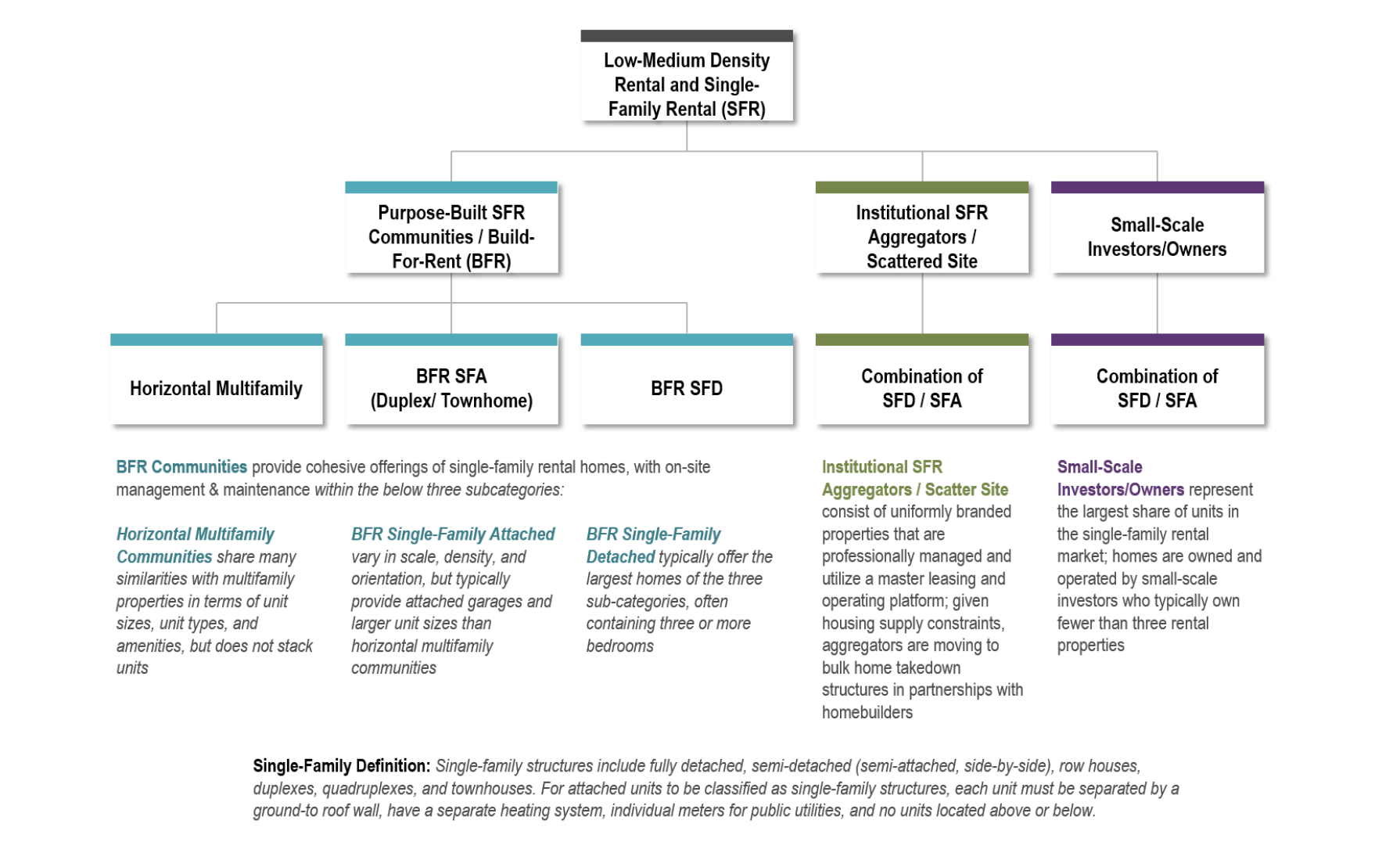 An in-depth report explores the rapid evolution of the single-family rental market, the institutionalization within the market of build-for-rent homes, and the emergence of new subclassifications of these assets.
An in-depth report explores the rapid evolution of the single-family rental market, the institutionalization within the market of build-for-rent homes, and the emergence of new subclassifications of these assets.
Entitled, Low Density Rental Housing in America the study is a collaboration between RCLCO Real Estate Consulting and the ULI Terwilliger Center for Housing. A summary of the report from RCLCO's Todd LaRue and Cameron Pawelek uses intel from their 20-page report to outline, among other things, the demographic trends and affordability challenges that have led to the growth of purpose-built single-family rentals, operating metrics and financials within the sector, and implications and predictions related to the SFR business.
"Demographic shifts including the millennial cohort moving into prime family formation ages are a primary driver for growth in lower-density housing types," write LaRue and Pawelek. "Given the constrained housing market and rising construction costs, the decline in homeownership affordability is one of the most pressing challenges facing many Americans, driving additional demand toward low-density rental housing.
"Single-family rentals benefit from the maturing millennials seeking a new type of rental product that matches their changing lifestyles, empty nesters looking to downsize to a maintenance-free living option, and the array of households in transitional life stages."
As part of this study, RCLCO and ULI analyzed news articles and conducted interviews with various market experts in their effort to codify the language around the product type, charting the various subsets of SFR, according to the authors.

Build-for-rent single family-detached communities are the most similar to individual SFR units," according to the report. The authors say these benefit from economies of scale with high concentrations of units in a single location and cohesive branding. Many are associated with or are sold from a larger master-planned community and have an average density of three to seven dwelling units per acre.
Small-scale investors represent more than 97% of the existing SFR housing market, according to the report. These landlords typically own a few properties and rent them through online marketplaces.
LaRue and Pawelek explain the emergence of larger-scale interest in the market, something Bloomberg also reported on earlier this year.
"After the Great Financial Crisis, institutional SFR aggregators emerged and aggregated thousands of homes across various markets, utilizing robust platforms and economies of scale. This group has also started to work directly with builders to purchase blocks of homes to add to their portfolio as the inventory of resale homes has tightened. The newest group is the purpose-built SFR or build-for-rent community, where the entire community is planned and built as rental, and thus has consistent branding, housing quality, and often offers on-site resources such as leasing services, property management, and amenities."
The primary audience for BFR SFD homes is family households, typically in a transitional period after moving to a new market or during home construction, with mature professionals and empty nesters representing secondary market audiences, the authors reported.
As DS News has frequently reported in 2021, build-to-rent homes, whose sector has remained steady over recent years with a small share of the market, show potential for imminent growth due to several factors at play in today's market. The RCLCO/Terwilliger Center study also showed an influx of investment and transaction in SFR over the past 18 months. On the downside for mom-and-pop investors, the researchers say the continuing demand for the SFR product among institutional investors could drive down cap rates below some garden-style apartments in the near term as more investors look to add SFR to their portfolios.
Another potential downside to incoming SFR assets such as build-to-rent is the potential impact on equity, the report suggests.
"Related to the affordability considerations, the higher price-point of some low-density rental communities could contribute to income segregation. Furthermore, in some markets, investor purchasers can create barriers to homeownership (with impacts on equity and economic mobility) if they can consistently outcompete individual first-time homebuyers for resale of existing homes, they report."
They suggest zoning and land use policies that support mixed-income and mixed-tenure opportunities for residents, among other ideas.
The authors of the report conclude that, "while it is unlikely that low-density rental housing will solve the country’s substantial affordability crises, providing more housing alternatives to meet the needs of a diverse array of American households is a positive step forward."
The 20+ page report is available through RCLCO.com. In addition to aforementioned LaRue and Pawelek, Adam Ducker, Ryan Guerdan, Liam Mercer, and Patricia Bacalao authored the study.
_______________________________________________________________________________________
Investors in build-to-rent communities and homes, as well as all single-family rental investors, are encouraged to attend this fall's Single-Family Rental and Investment Roundtable, part of 2021 Five Star Conference and Expo, September 19-21 at the Hyatt Regency Hotel in Dallas, Texas.

 DSNews The homepage of the servicing industry
DSNews The homepage of the servicing industry









